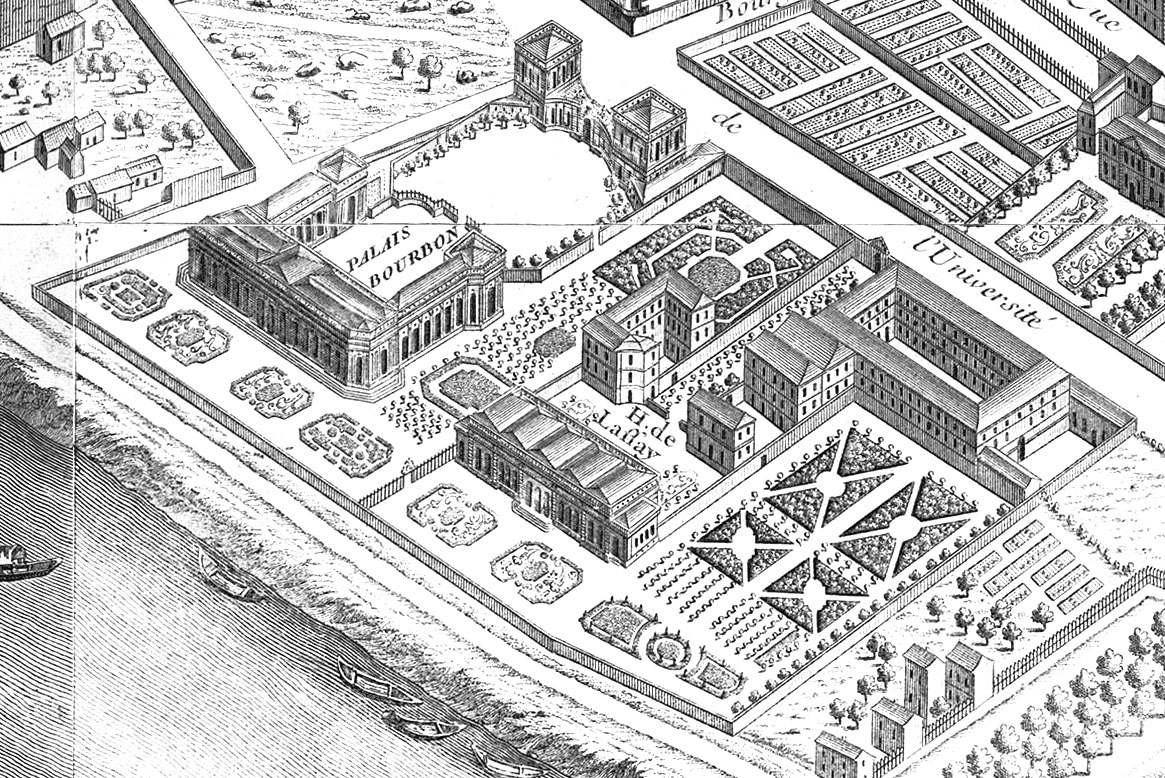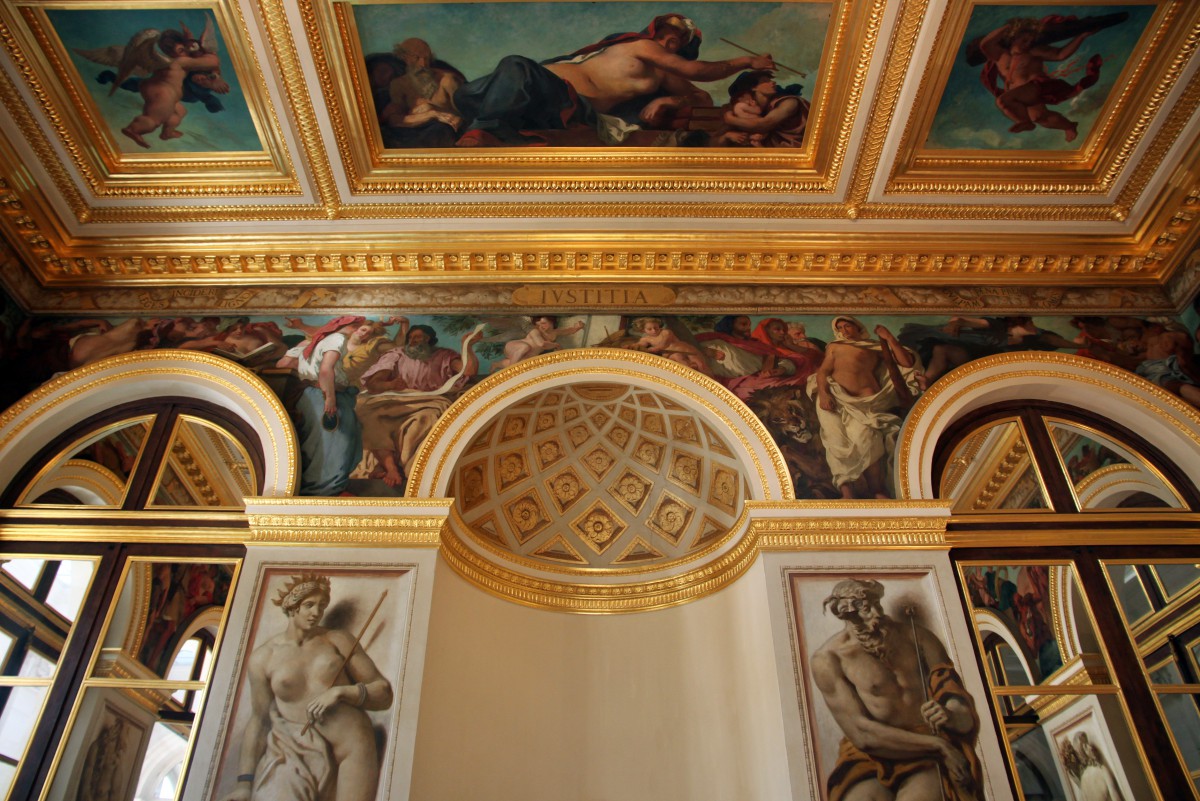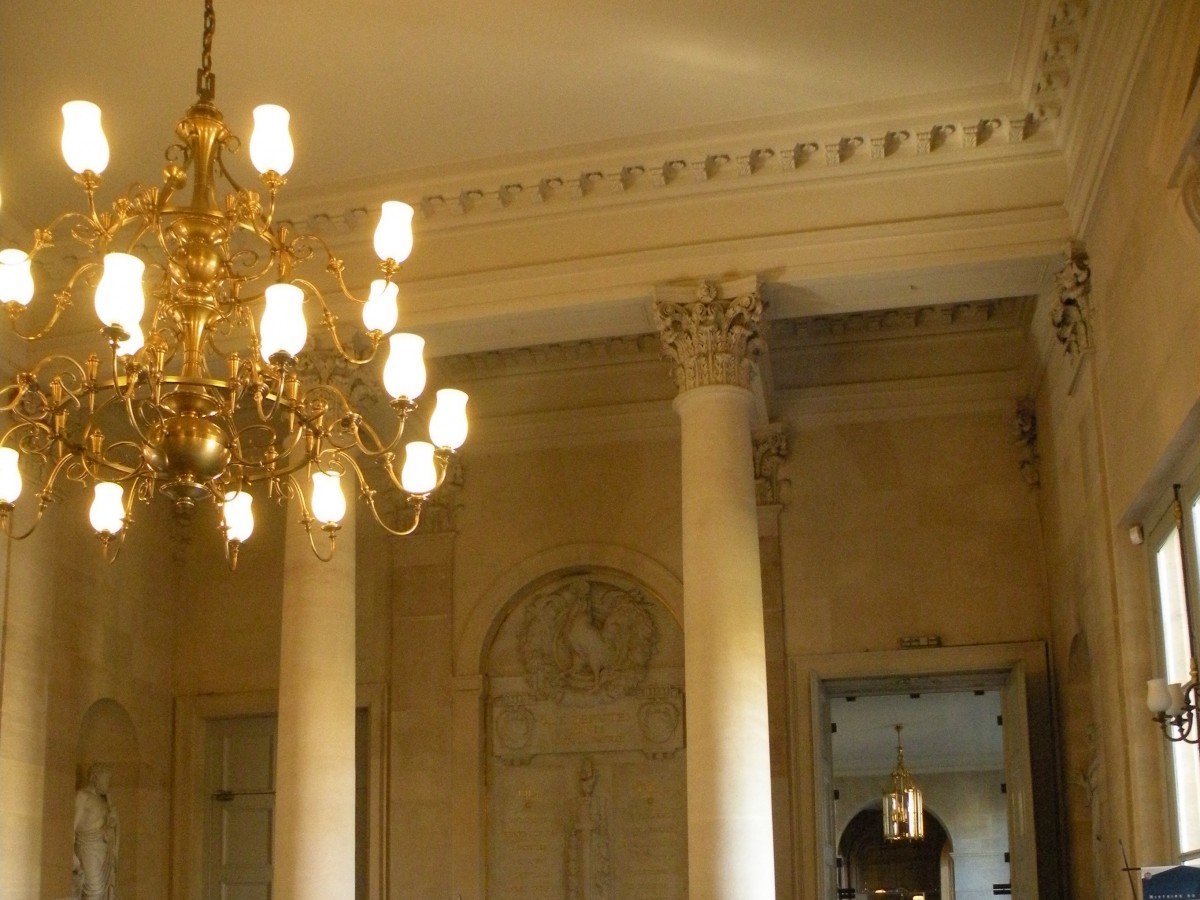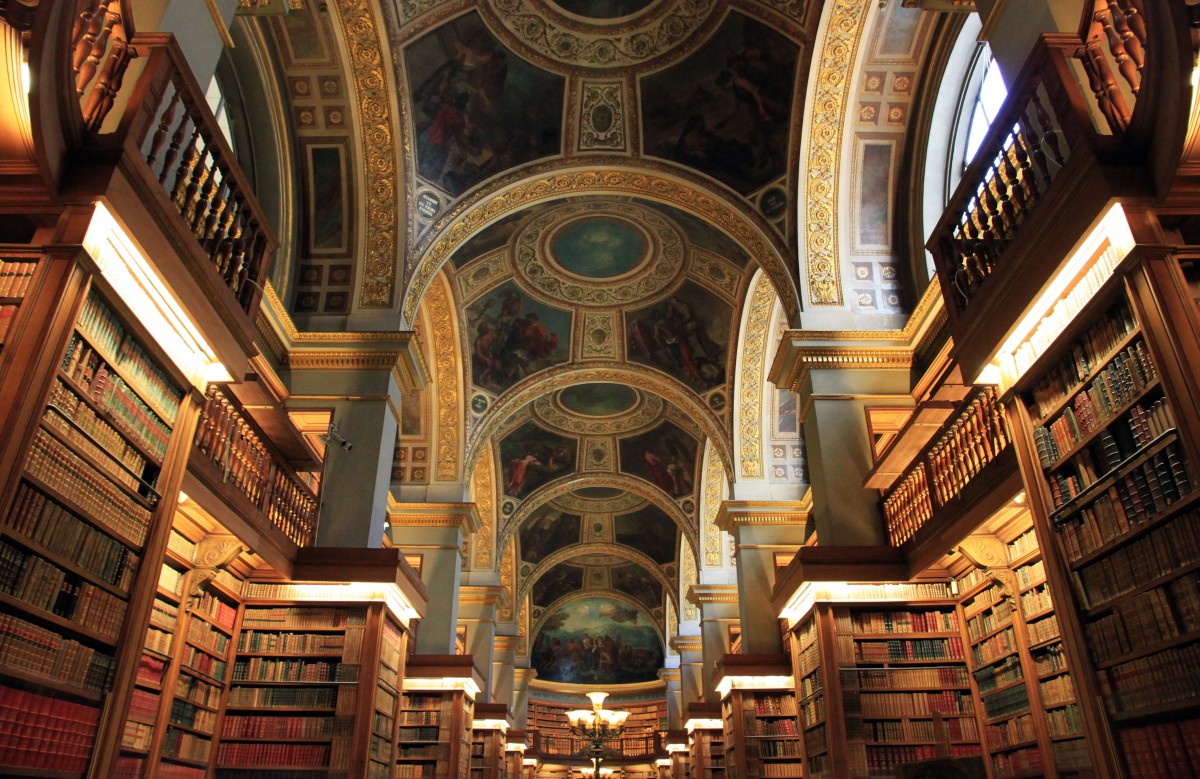Palais Bourbon is located in the 7th arrondissement in Paris. It is facing the Place de la Concorde and its façade echoes that of the church of the Madeleine. It is is the seat of the French National Assembly, the lower legislative chamber of the French parliament.
A brief history of Palais Bourbon

The palace was built in 1722 by Giardini for the Duchesse de Bourbon, the legitimised daughter of Louis XIV and Françoise-Athénaïs, marquise de Montespan. The domain included a country-house surrounded by gardens that originally reached the banks of the Seine.
During the French Revolution, the palace was confiscated and declared national property. During the Directory, it became the meeting place of the Council of Five Hundred (le Conseil des Cinq-Cents). This ancestor of today’s National Assembly was the lower house of the legislature of France under the First Republic.
The building was redesigned and its function rooms transformed. The semi-circular hall (L’Hémicycle) was built to host parliamentary sessions.
The colonnaded façade of Palais Bourbon facing the Seine
The grand pedimented portico with its twelve majestic columns facing the River Seine was inspired by ancient temples. It was commissioned from architect Bernard Poyet during the Napoleonic Era. Completed in 1806, the façade echoes the Classical portico of the Madeleine Church visible across Place de la Concorde. It is approached by 30 steps.

The pediment of the portico was sculpted by Cortot between 1838 and 1841. It features the French Republic standing in the middle, surrounded by the symbols of the legislative process: Strength and Justice.
In 1810, statues of famous French royal ministers were placed in front of the façade:
- Maximilien de Sully (the reformer, by Pierre-Nicolas Beauvallet)
- Jean-Baptiste Colbert (the organiser of economy, by Jacques-Edme Dumont)
- Henri François d’Aguesseau (the unifier of law and jurisprudence, by Jean Joseph Foucou)
- Michel de L’Hospital (the conciliator, by Louis Pierre Deseine)
The main entrance from Place du Palais Bourbon

The main entrance to the palace is situated at Place du Palais Bourbon. The majestic gateway is framed by Corinthian columns and leads to the main courtyard.
At the end of the court of honour is the ceremonial entrance. Inspired by ancient temples with four columns, the grand entrance is flanked by two statues by Gayard: France and Liberty (1860).

Just in front of the entrance is a granite ball on a pedestal. Known as the Sphere of Human Rights, it was designed by American sculptor Walter de Maria and placed there in 1989 to commemorate the bicentennial of the French Revolution.
The Chamber of Deputies
Palais Boubon has been the seat to the lower house of the French Parliament since 1830: the National Assembly (Assemblée nationale). The Chamber of Deputies is a semi-circular hall (L’hémicycle) where 577 députés (MPs) take place in red-velvet chairs.

Also known as the Salle des Séances, the meeting hall of the Deputies is dominated by the desk of the President of the National Assembly (le perchoir).
In 1832 the Chamber of Deputies was given the appearance of a theatrical stage with the addition of a colonnade and balconies to form a triumphal arch.

The tribune is flanked by niches with statues by Pradet representing Liberty and Public Order.
Between them, a tapestry from the Manufacture des Gobelins made between 1683 and 1688.
In 1830, four statues were placed at the top of the arch’s columns: Force, Justice, Prudence and Eloquence.
The interior of Palais Bourbon
Apart from the Chamber of Deputies, there are a number of beautiful rooms and halls to discover inside the Palais-Bourbon. Most of them have been created under Louis-Philippe and decorated by famous artists such as Eugène Delacroix:
The Salle Casimir Perier

This wide corridor has a vaulted ceiling which features a bronze bas-relief of the 1798 Assembly by Jules Dalou.
The Salle des pas perdus

The remarkable ceiling was painted by Horace Vernet and Charles Sechan. It features the Genius of Steam, Peace distributes her benefits, and Steam chasing the gods of the Sea.
The Salon Delacroix

Formerly known as Salon de Roi, it was decorated by Eugène Delacroix.
The Salon Abel de Pujol

The neoclassic artist Abel de Pujol painted the grisailles on the ceiling. They represent the role of French monarchs in the establishment of law: Clovis I, Charlemagne, St. Louis and Louis-Philippe.
The Salle des quatre colonnes

It takes its name from the four columns that decorate the room. Along with the Salle des Pas Perdus, this is the place where journalists interview the MPs.
The Library

The library was built in the style of the ancien Roman baths with pillars supporting five cupolas. Its collection of books originally comprised of confiscated items from aristocrats during the French Revolution. The library was created on the 4th March 1796.

The room was decorated by Delacroix and team between 1838 and 1847. The library was donated some precious items such as the minutes of the trial of Joan of Arc.
Palais Bourbon: Practical Info

- Palais Bourbon can be seen from two spots: Place du Palais Bourbon (the main entrance) AND Quai d’Orsay/Pont de la Concorde (the neo-classical portico mirroring the Madeleine church). Check out google map for the exact location of Palais Bourbon in Paris.
- Closest métro station: Assemblée nationale (line 12), and Invalides (lines 8 and 13, RER C).
- Check out the official website of the National Assembly for more info (a few pages are available in English). You can download the English version of the National Assembly presentation brochure here.
- As for visiting the Palais Bourbon, this might be a bit tricky. Individual visits have been suspended since the State of Emergency was declared. Tours are therefore still organised for groups with a maximum of 50 people when invited by an MP. More info on the National Assembly website (in French).
Did you enjoy reading this article? If so please share it on Facebook, twitter or Pinterest! 🙂






